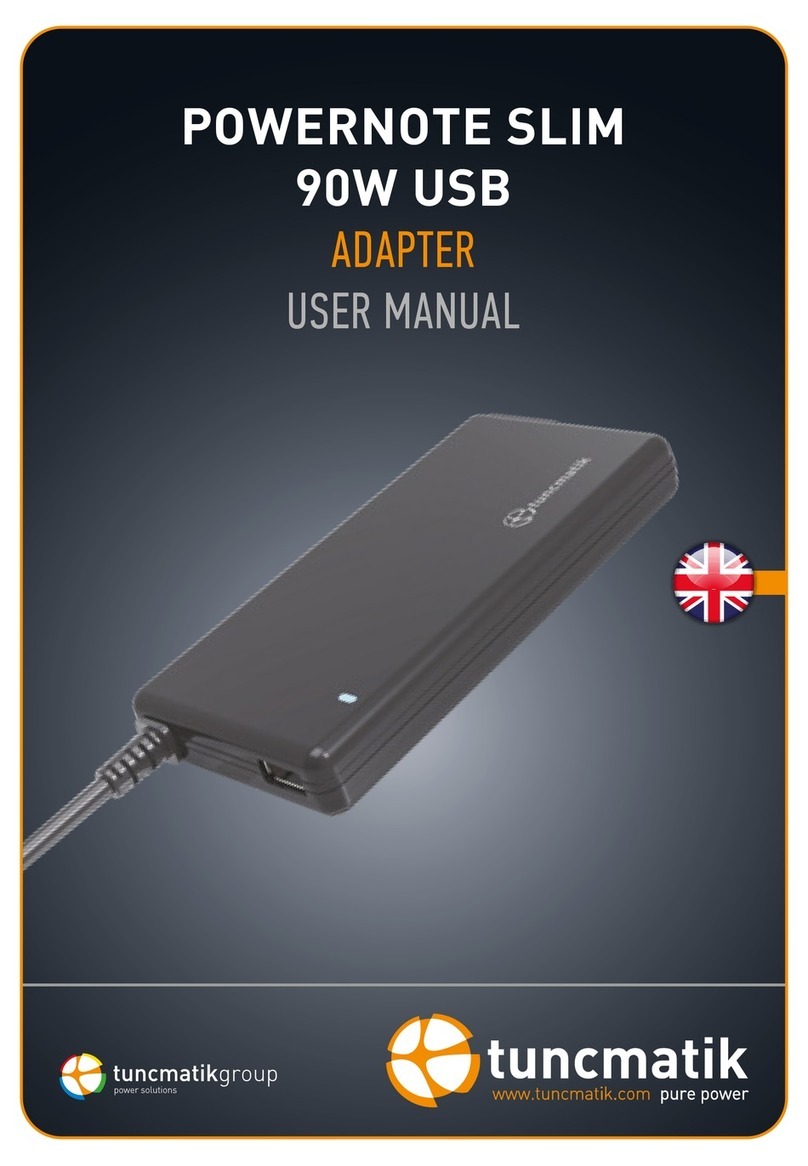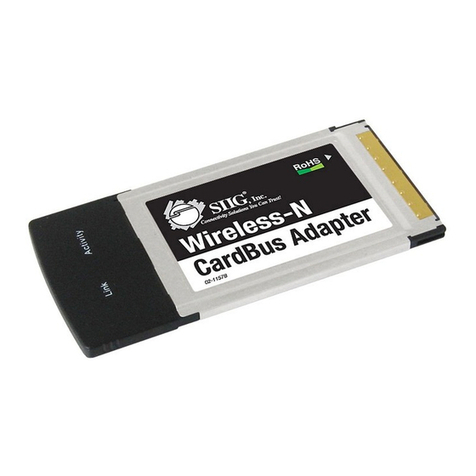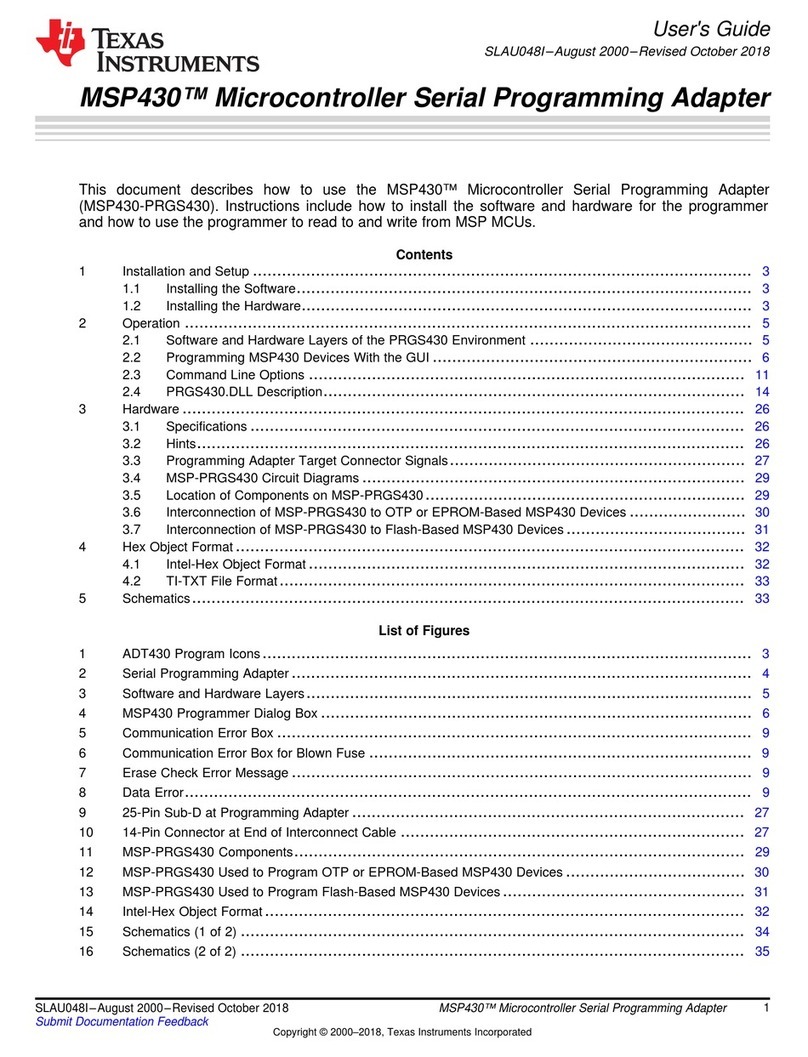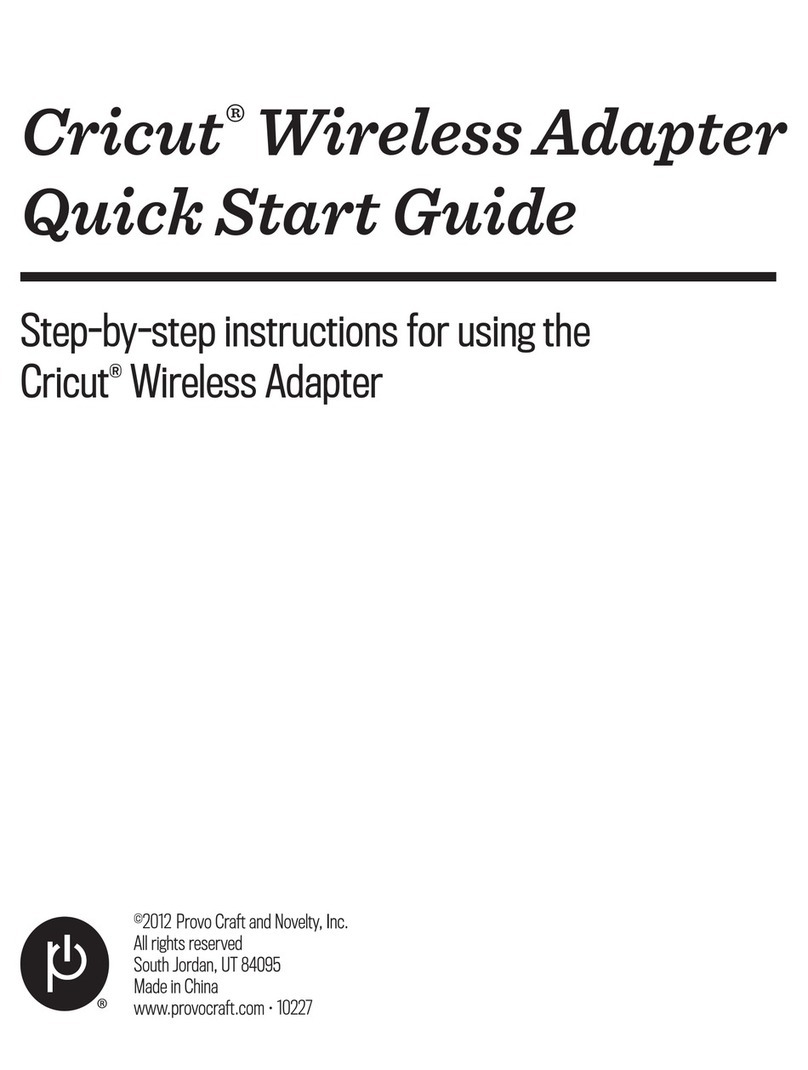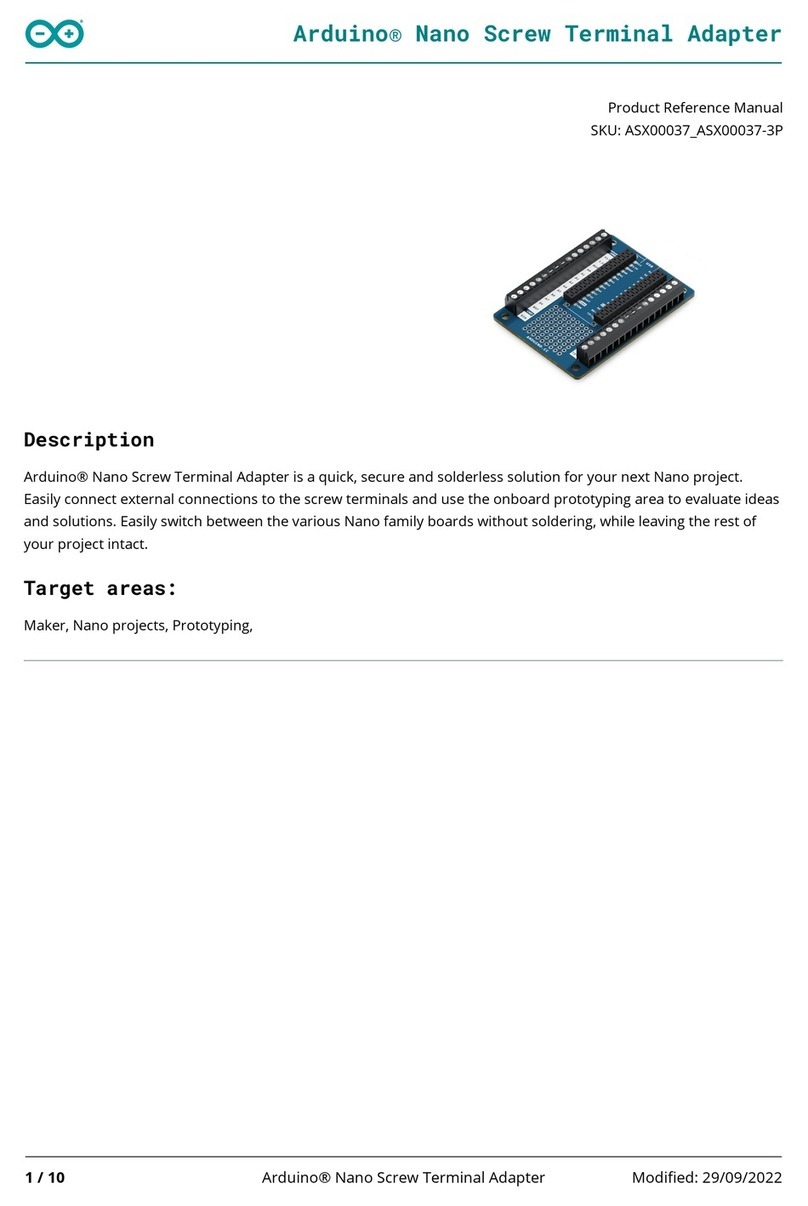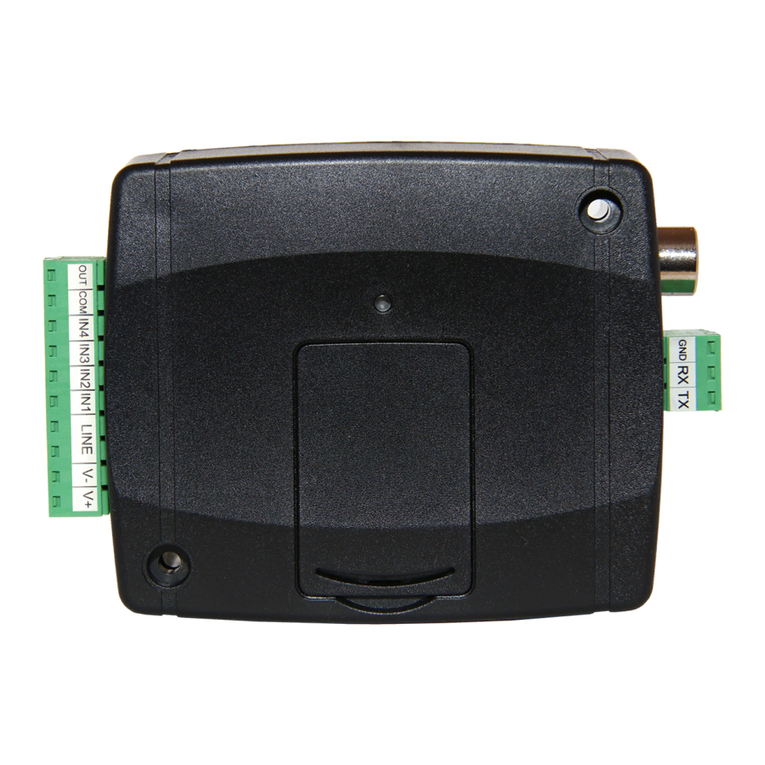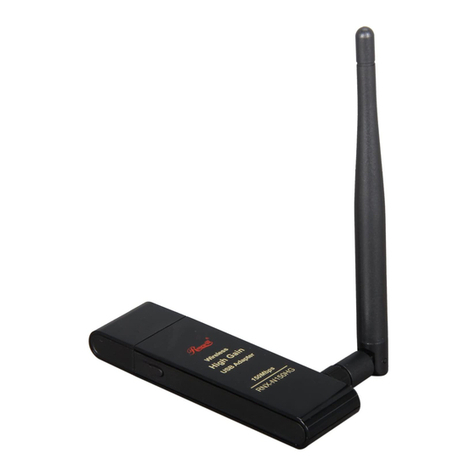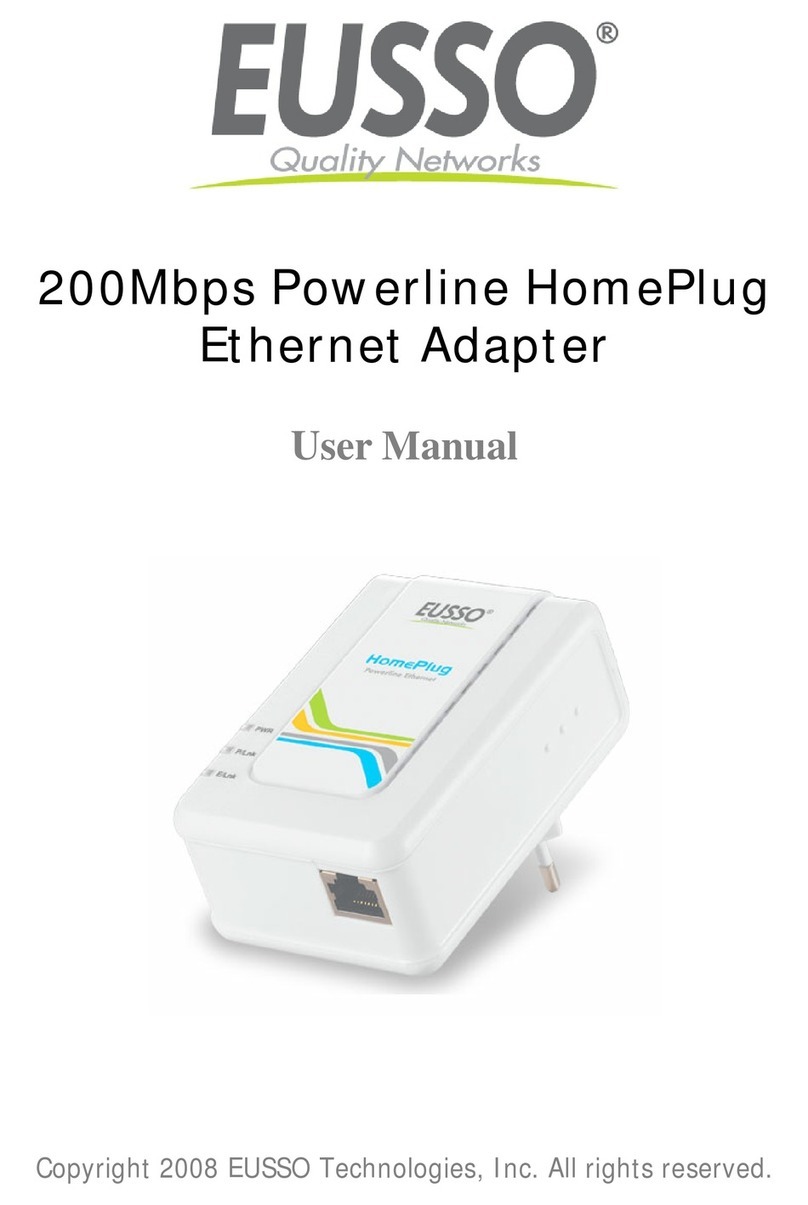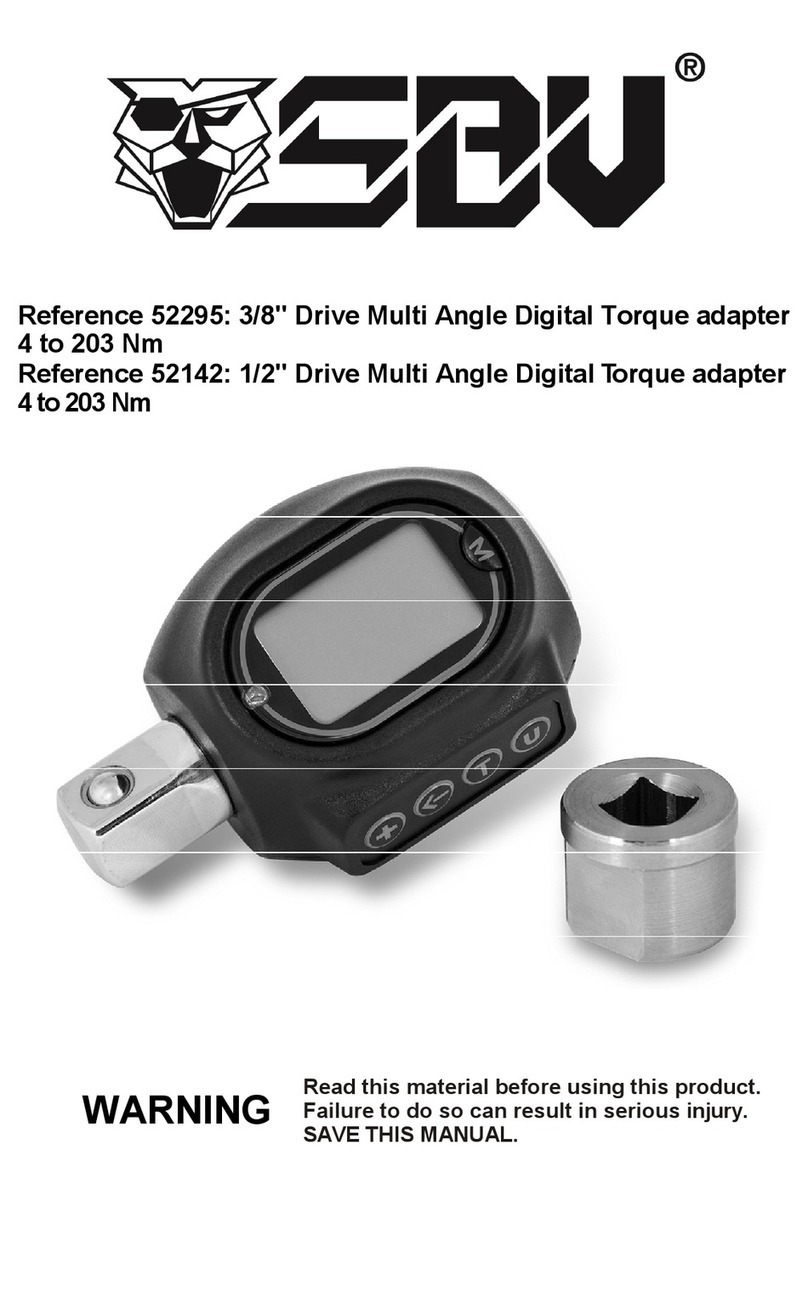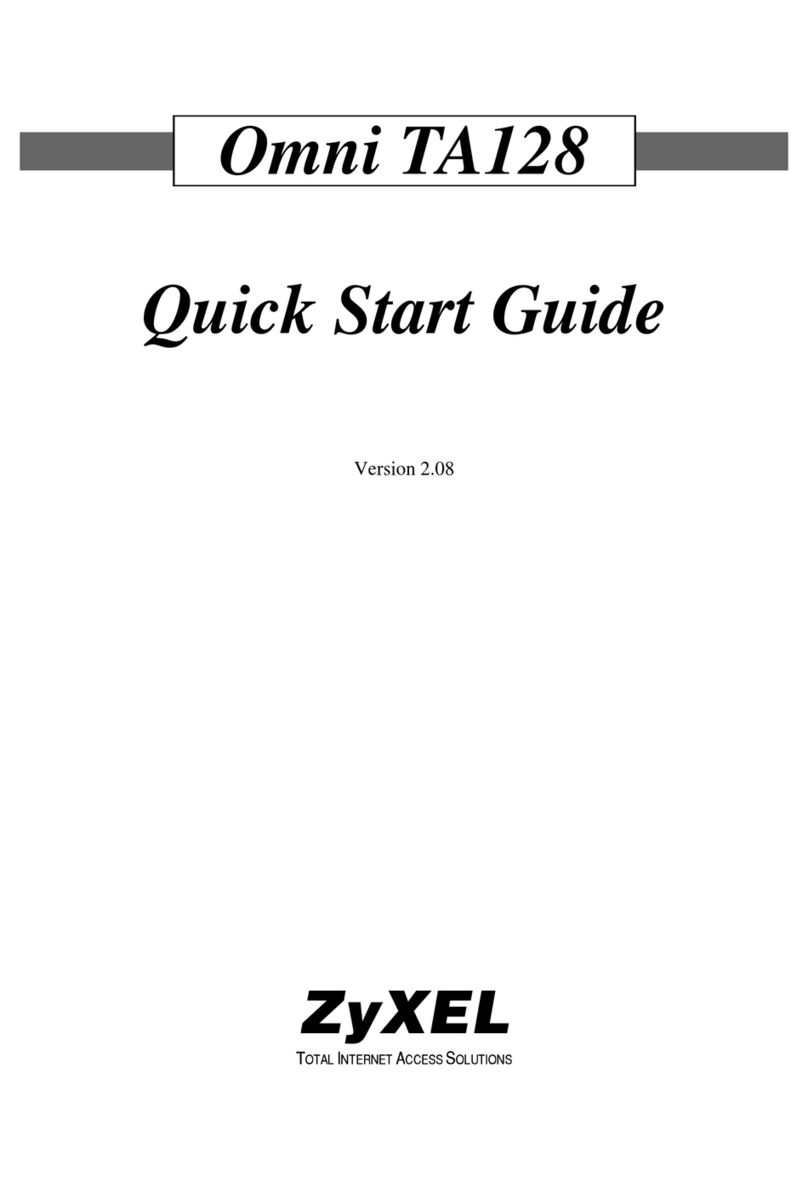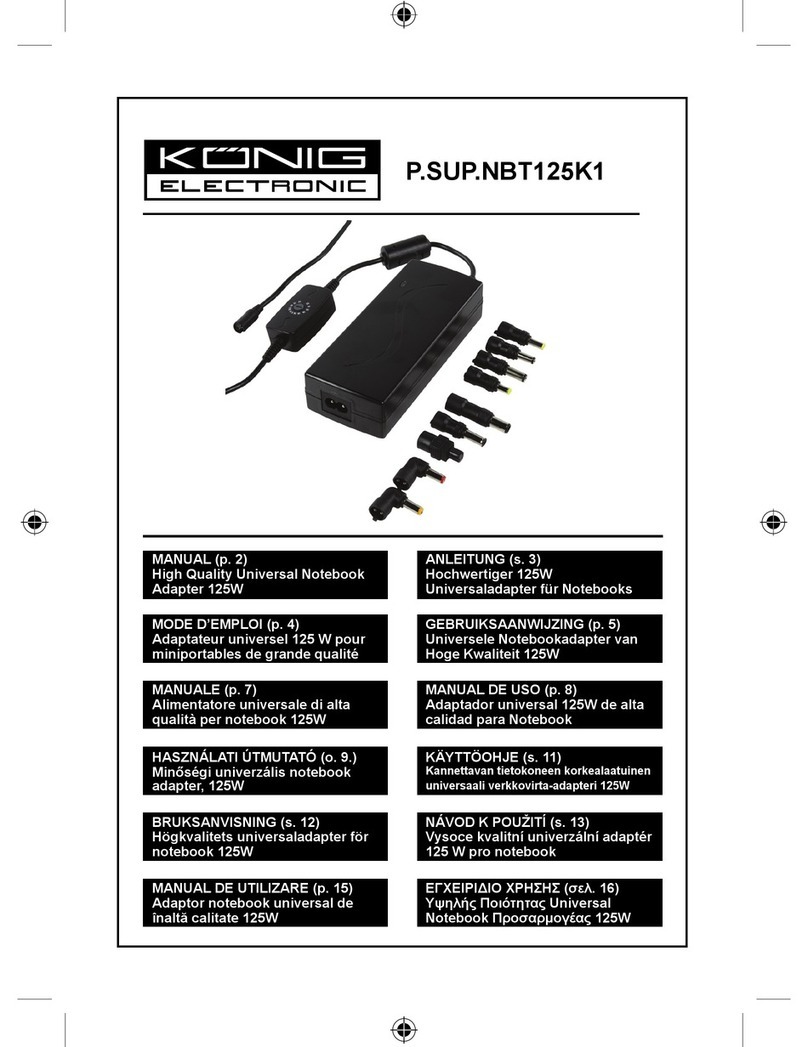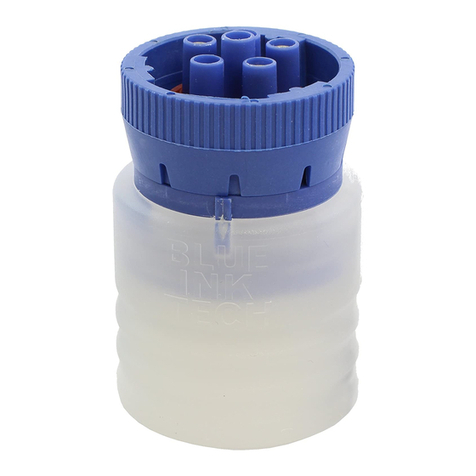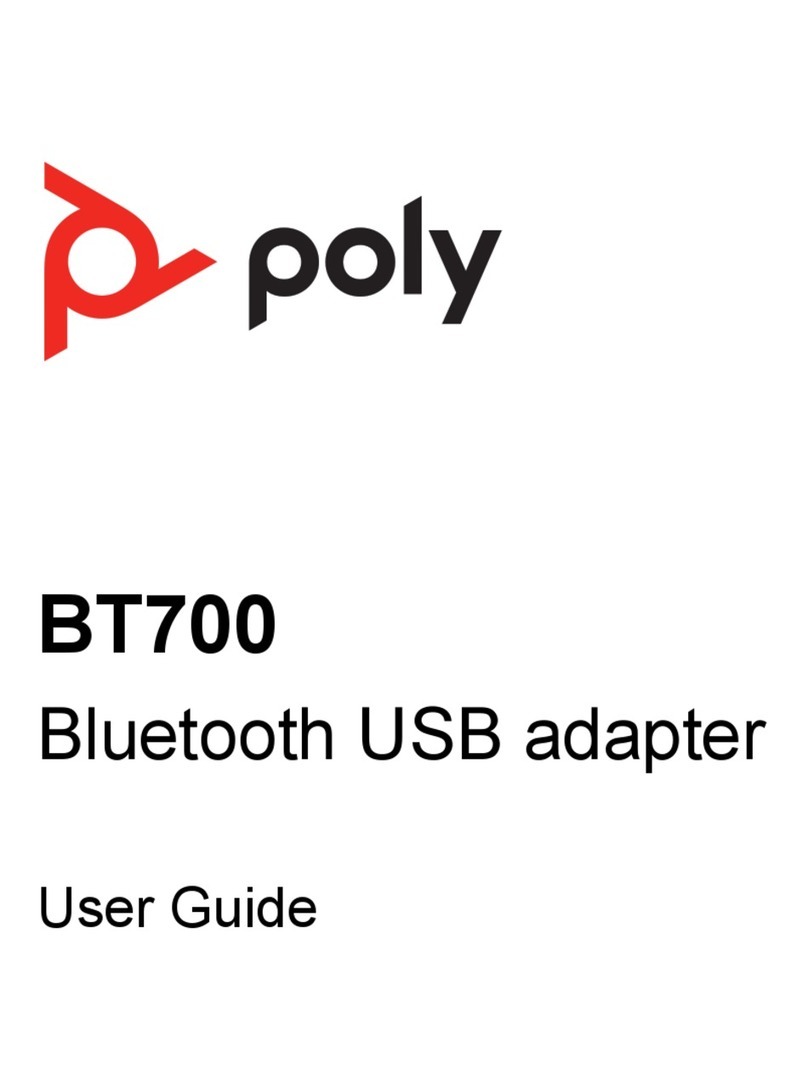Electronic Systems Protection NEXT GEN PCS 120 User manual

User Manual
120 and 208/230 Volt Models
120V Firmware Revision 1.40 and higher
208/230V Firmware Revision 1.0 and higher
Software Revision 2.7 and higher
© 2015 Electronic Systems Protection, Inc. | Technical Support: 800-645-9721 | espsurgex.com | UM- N e x t - G e n - R e v - D


User Manual
1
© 2015 Electronic Systems Protection, Inc. | Technical Support: 800-645-9721 | espsurgex.com
I. NEXT GEN PCS PRODUCT OVERVIEW 2
II. INSTALLATION INSTRUCTIONS 3
1. Next Gen PCS PC Filter Installation 3
2. Next Gen PCS Data Interface Kit –PC and Driver Installation……………...…….…………….......……….………...6
3. Next Gen Data Interface Kit –Diagnostic Software Installation……………….………………………….…………….6
III. Hardware 9
1. Next Gen PCS Filter………………………………………………………………….……………………………………...9
a. LCD Event Monitor……………………………………………………………………………………………………..9
b. Clearing Memory……………………………………………………………………………………………..……….11
2. Next Gen PCS Data Interface Cable………………………………………………………………………………….….11
a. Overview…………………………………………………………………………………………………….…..……..11
b. Instructions for Data Retrieval……………………………………………………………………………………….12
IV. Diagnostic Software 12
1. Starting the Program…………….………………………………………………..………………………………………..12
2. How to Connect to Next Gen PCS Filter…………………………………………………………………………………12
3. GUI Overview……………………………………………………………………………………………………………….13
4. Menu Items………………………………………………………………………………………………………………….15
5. Voltage Limit Set……………………………………………………………………………………………………………17
6. Cycle Power Command……………………………………………………………………………………………………17
7. Enhanced Logging Mode………………….………………………………………………………..……………………..18
8. Graph Overview & Control………….……………………………………………………………………………………..19
V. Troubleshooting 23
1. Next Gen PCS Filter………………………………………………………………………………………………………..23
2. Diagnostic Software………………………………………………………………………………………………………..24
VI. Specifications 25

User Manual
2
© 2015 Electronic Systems Protection, Inc. | Technical Support: 800-645-9721 | espsurgex.com
I. NEXT GEN PCS PRODUCT OVERVIEW
The ESP Next Gen PCS is a state-of-the-art, microprocessor-controlled, hybrid power filter
engineered with real-time data acquisition and storage.
Models: This manual applies to the following Next Gen PCS models:
Model Number
Voltage (AC RMS)
Current (AC Amps)
LCD
Outlet
XG-PCS-15D
120
15
Yes
XG-PCS-20D
120
20
Yes
XG-PCS-20815D
208/230 split phase
15
Yes
XG-PCS-20820D
208/230 split phase
20
Yes
XG-PCS-23013
230 single phase
13
Yes
XG-PCS-L630
208/230 split phase
30
Yes
XG-PCS-630
208/230 split phase
30
Yes
XG-PCS-IK
Data Interface Kit: Volts and Amps not applicable
Key Features:
Industrial Strength Normal and Common Mode EMI Noise Filter
Industrial Strength 3-Stage Normal and Common Mode AC Surge Suppressor
ETL Certified CAT5e Network Line Surge Suppressor
Modem/Fax Line Surge Suppressor
Modem/Fax DSL Filter
Zero-Voltage Turn-On
Zero- Current Turn-Off
Inrush Current Elimination (ICE®)
Wiring Fault Detection
Catastrophic Over/Under Voltage Shutdown (CouVS®) with selectable thresholds
Under-Voltage Event Recorder (up to 999 events)
Over-Voltage Event Recorder (up to 999 events)
Power Outage Event Recorder (up to 999 events)
Surge Event Recorder (up to 999 events)
oRecords surges in all three modes: Line-Neutral, Line-Ground, Neutral-Ground (120V)
oRecords surges in all three modes: Line1-Line 2, Line1-Ground, Line2-Ground (208/230V)
Event Timestamp Recorder (up to 60 events)
oRecords time between events
LCD Event Monitor cycles through:
oUnder-Voltage Events
o Over-Voltage Events
o Power Outage Events
o Surge Events
oLast Recorded Event Type
oOutput Status (On or Off)
oAdditional information in certain circumstances
(detailed in Section III: Hardware/Next Gen PCS Filter/LCD Event Monitor)
Additional features available when connected to a PC
(detailed in Section IV: Diagnostic Software)
Technical Support:
To download software and access further product information,
visit www.nextgenpcs.com or www.espei.com.
For Next Gen PCS technical support, please contact ESP at 1-800-645-9721.

User Manual
3
© 2015 Electronic Systems Protection, Inc. | Technical Support: 800-645-9721 | espsurgex.com
II. INSTALLATION INSTRUCTIONS
1. Next Gen PCS Filter Installation:
a. Turn off the machine you are connecting to the
Next Gen PCS Filter, and unplug the machine’s
power cord from wall outlet.
b. Connect Modem/Fax line: Connect a phone cord from the wall jack to the
“Modem/Fax” modular jack labeled “IN”, and then connect a second phone cord
from the “Modem/Fax” modular jack labeled “OUT” to the machine/equipment to
be protected.
Please Note: The Next Gen PCS Filter series only provides connectivity and protection for a
single phone line –connecting the Filter to a phone jack with 2 lines using
4-conductor telephone cable may cause Filter malfunction, detailed in
Section V: Troubleshooting/Next Gen PCS Filter Hardware.
c. Connect “10/100/1000 ETHERNET” network line: Connect a CAT5e network
cable from the wall jack to the “10/100/1000 ETHERNET” modular jack labeled
“IN”, and connect a second CAT5e network cable from the “10/100/1000
ETHERNET” modular jack labeled “OUT” to the equipment to be protected.
One CAT5e network cable is included with the Next Gen PCS Filter.

User Manual
4
© 2015 Electronic Systems Protection, Inc. | Technical Support: 800-645-9721 | espsurgex.com
d. Connect Equipment
i. Connect the AC power cord of the equipment to be protected into the
short output power cord of the Next Gen PCS Filter.
ii. For 120V products and XG-PCS-23013: Connect the AC power cords of
additional peripherals into the 2 convenience receptacles next to the short
output power cord.
Make sure that the total amperage of all equipment plugged into the Next
Gen PCS Filter does not exceed the maximum branch circuit rating.
Please Note: Exceeding the branch circuit rating will cause the branch circuit breaker
to trip.

User Manual
5
© 2015 Electronic Systems Protection, Inc. | Technical Support: 800-645-9721 | espsurgex.com
e. Connect Next Gen PCS Filter to Outlet: Plug the Next Gen PCS Filter input power
cord into a properly grounded and compatible branch circuit outlet.
Please Note: Do not plug the Filter into a re-locatable power tap.
i. If the branch circuit outlet is correctly wired and the magnitude of the line
voltage is acceptable (between 105 and 130 VRMS for 120V products, or
between 190 and 250VRMS for 208/230V products), power will be
connected to the outlets of the Next Gen PCS Filter and the Green
“System On” LED will illuminate. Your equipment is now protected and
installed correctly. You may now turn all connected equipment back on.
ii. If the branch circuit outlet is incorrectly wired, the Red ‘Wiring Fault” LED
will illuminate and the LCD Event Monitor will display specific wiring fault
information. If this occurs, contact a licensed electrician to correct the
outlet wiring. Refer to Section III: Hardware/Next Gen PCS Filter, for LCD
EVENT MONITOR display details.
iii. If neither “System On”, nor the “Wiring Fault” LED illuminates, there is
either no voltage at the receptacle or the magnitude of the line voltage is
not acceptable (less than 105 VRMS or above 130 VRMS for 120V products,
or less than 190 VRMS or above 250 VRMS for 208/230V products). If the
magnitude of the line voltage is not acceptable, specific information will be
displayed on the LCD EVENT MONITOR. If this occurs, contact a licensed
electrician to trouble-shoot the abnormal voltage condition. Refer to
Section III: Hardware/Next Gen PCS Filter, for LCD EVENT MONITOR
display details.
1.
You may also need to verify that the Filter is operating properly.
To test, plug Next Gen PCS Filter into a known properly functioning
outlet. If the “System On” LED still does not illuminate in the
functioning outlet, contact ESP at 1-800-645-9721.
CAUTION –Do not install this
device if there is not at least 10
meters (30 feet) or more of wire
between the electrical outlet and
the electrical service panel.
La PRUDENCE - n’installe pas cet
artifice s’il n’y a pas au moins 10
mèters (30pieds) ou plus de fil
entre l’issue èlectrique et le comitè
de service èlectrique.

User Manual
6
© 2015 Electronic Systems Protection, Inc. | Technical Support: 800-645-9721 | espsurgex.com
2. Next Gen Data Interface Kit - PC and Driver Installation:
For Model XG-PCS-IK
Please Note:
The Next Gen PCS Filter may be
accessed by a PC while connected
to AC power and equipment, or while disconnected from AC power and equipment.
If accessed by a PC while connected to AC power: For best protection, it is
recommended that the power cord of the computer is plugged into an available
receptacle on the Next Gen PCS Filter.
Connecting the Next Gen PCS Filter to a PC allows for the availability of the
followingfeatures:
Import data stored in the Next Gen PCS Filter’s device memory
Import data from a stored data file
Export data to a data file
Export data to a report in PDF format
Set over and under-voltage shutdown thresholds
Clear device memory
Real-time AC voltmeter
Enhanced Logging Mode
Equipment required for PC communication:
Next Gen PCS Filter
Next Gen PCS Data Interface Cable
Next Gen PCS Diagnostic Software (Revision 2.7)
PC running Windows 2000 or later with a CD-ROMand USB port and
a minimum screen resolution of 1024x768
a. Connect Next Gen PCS Data Interface Cable to your PC
i. Plug the USB end of the Data Cable to an
available USB port on your PC.
b. Install Next Gen PCS Driver Files
i. Automatic (requires Internet connection)
When you plug the USB into your PC, Windows will automatically detect
the cable.
1.
When the “Found New Hardware” pop-up box appears, be sure to
select “Yes, this time only” option for the device driver installation
2.
This installation could take a few minutes to search and download the
driver files. Once the files are found, follow the on-screen instructions
to install.
3. Please Note: The drivers will first install the USB serial converter, and
will then install the USB serial port drivers separately.
ii. Manual
In the event that the automatic driver installation does not function or there
is no internet connection, select “Install Drivers” during the Next Gen PCS
Software Installation.

User Manual
7
© 2015 Electronic Systems Protection, Inc. | Technical Support: 800-645-9721 | espsurgex.com
c. Configure PC Settings for COM Port
*Note: The COM Port Settings procedure has been automated in software version 2.7.
See Section II –3 –c –ii –3 for details.
i. Open Device Manager
1.
Windows 2000 / XP
a. Click on Start and then select Run.
b. Type the following command in the “Open:” text box: devmgmt.msc
c. Click on the OK button.
d. Device Manager will display.
2.
Windows 7 / Vista
a. Click on Start button
b. Type the following command in the “Search:” text box:
devmgmt.msc
c. Click on the OK button.
d. Device Manager will display.
ii. In the Device Manager, Expand “Ports (COM & LPT)”
1.
Locate the entry labeled “USB Serial Port (COMx)”, where x refers to the
COM port number assigned by Windows.
2.
Right-click on “USB Serial Port (COMx)” and click “Properties”.
3.
USB Serial Port Properties pop-up box will display
iii. In the USB Serial Port Properties pop-up box:
1.
Click the “Port Settings” tab, and then click the “Advanced” button.
a. If the “COM Port Number” is not between 1 and 9, change the
assigned value to a value between
1 and 9.
i. Make a note of the COM Port Number.
It will be needed to configure the Diagnostic Software
(as noted in Section II –3 –C : Select COM Port.)
b. In “USB Transfer Sizes”, change both the “Receive” and “Transmit”
values to 512.
c. In “BM Options”, change the “Latency Timer” value to 4.
d. Leave all other settings at default.
e. Press “OK”, and then press “OK” again.
iv. Close Device Manager.

User Manual
8
© 2015 Electronic Systems Protection, Inc. | Technical Support: 800-645-9721 | espsurgex.com
3. Next Gen Data Interface Kit - Diagnostic Software Installation:
a. Install Software:
i. Plug the USB end of the Data Cable to an available USB port on your PC.
ii. Download Software Installer from www.espei.com.
iii. Unzip and run the installation utility
iv. Follow on-screen instructions to
complete installation of the Next
Gen PCS Diagnostic Software
b. Starting the program: Open the “ESP Next Gen
PCS” Software on your PC (located under
“Programs”). When you first open the program,
it will look like the following.
c. Select COM Port:
i. Specify which COM port the Next Gen PCS
Diagnostic Software should communicate
through by navigating to “Setup/COM Port”.
ii. In the window that appears, use the drop box to select the appropriate
COM port, and press “Save”.
1.
Be sure to use the same COM port number that was selected in
Section II –2 –C –iii: USB Serial Port Properties pop-up box
2.
The correct COM port number may be automatically detected by
pressing the “Auto Detect” button while the Next Gen PCS and Data
Interface Cable are connected to the computer.
3.
The COM Port Settings may be automatically configured by pressing
the “Auto Configure” button. Windows Vista/7 users: For proper
operation of this feature, right-click on the application shortcut and
choose “Run As Administrator”.
Your PC is now set up correctly to communicate
with the Next Gen PCS Product Line.

User Manual
9
© 2015 Electronic Systems Protection, Inc. | Technical Support: 800-645-9721 | espsurgex.com
III. HARDWARE
1. Next Gen PCS Filter
a. LCD Event Monitor
The LCD EVENT MONITOR displays useful
information related to data collection, device
status, and troubleshooting.
i. Normal Operation
1. When the Next Gen PCS Filter is plugged into a branch circuit
outlet with correct wiring and acceptable line voltage, the LCD
Event Monitor will cycle through the following information:
a. Number of recorded Under-Voltage events:
b. Number of recorded Over-Voltage events:
c. Number of recorded Power Outage events:
d. Number of recorded Surge events:
e. Last recorded Event type:
f. Outlet Status (On or OFF):

User Manual
10
© Electronic Systems Protection, Inc. / 03.08.13 / espei.com / nextgenpcs.com
ii. Wiring Fault
When connected to an incorrectly wired branch circuit outlet, in addition to
the illumination of the Red LED, the LCD Event Monitor will display the
following information:
Wiring Fault
Condition
Display
LCD EVENT
MONITOR
Line (Hot) /
Neutral Reversed
(120V products only)
rP (Reverse Polarity)
Missing Ground
gnd (no Ground)
iii. Abnormal Voltage
When the magnitude of the branch circuit outlet voltage is not acceptable*,
the Next Gen PCS Filter will disconnect power to its outlets and display the
following information on the LCD Event Monitor (*above the over-voltage
shutdown threshold or below the under-voltage shutdown threshold; refer
to Section IV: Diagnostic Software for more information):
Voltage Condition
Display
LCD EVENT
MONITOR
Over-Voltage
OFF + OVER
Under-Voltage
OFF + UNDER

User Manual
11
© Electronic Systems Protection, Inc. / 03.08.13 / espei.com / nextgenpcs.com
b. Clearing Memory:
The Next Gen PCS Filter is able to timestamp the 60 most recent power quality
events (information stored in microcontroller non-volatile memory). The
microcontroller memory contents can be cleared at any time by following one of
these two methods:
i. RST Button:
There is a recessed push button located on the far right of the front
endplate (the end plate that contains the RJ45 and RJ11 and modular
jacks).
Follow these steps to clear the device memory:
1. Unplug the input cord of the Next Gen PCS Filter from the branch
circuit outlet.
2. Using a paperclip or small screwdriver, press and hold the RST
button.
3. Plug the input cord of the Next Gen PCS Filter into a properly
grounded and compatible branch circuit outlet, while continuing to
hold the RST button.
4. Wait approximately 3-5 seconds; the LCD Event Monitor will now
display “cLr”; release the RST button and the device
microcontroller memory will now be cleared.
ii. Diagnostic Software:
The device microcontroller memory may alternately be cleared from within
the Diagnostic Software in the following location: “Tools/Clear Device
Memory”. See Section IV–4- C: Tools Menu, for details.
2. Next Gen PCS Data Interface Cable
a. Overview
i. The Next Gen PCS Data Interface Cable consists of a
USB connection on one end, and a RJ-11 connection on
the opposite end.
ii. The USB connection plugs into an available USB port on
your PC. The RJ-11 connection plugs into the RJ-11
“OUT” Jack (labeled “Data Port”) on the Next Gen PCS
Filter, which is the jack closest to the LCD Event Monitor
and RST button.

User Manual
12
© Electronic Systems Protection, Inc. / 03.08.13 / espei.com / nextgenpcs.com
b. Instructions for Data Retrieval
i. Disconnect any protected Modem/Fax lines connected to the “IN” and “Out”
RJ-11 modular jacks on the Next Gen PCS Filter. Ethernet connections (RJ-45)
mayremain in place. (Skip this step for (XG-PCS-L630 / XG-PCS-630).
ii. Connect the Next Gen PCS Data Interface
Cable into the USB port on your PC.
iii. Connect the Next Gen PCS Data Interface
Cable into the RJ-11 “OUT” Jack (labeled
“Data Port”) on the Next Gen PCS Filter. It
is the jack closest to the LCD Event
Monitor and RST button.
For (XG-PCS-L630 / XG-PCS-630):
Connect the Data Interface Cable into the
RJ-11 jack labeled “Data Port” next to the
LCD on the face of the unit.
iv. Open Next Gen PCS Diagnostic Software.
v. When you are finished, be sure to re-
connect the Modem/Fax lines to the “IN” and “Out” RJ-11 modular jacks on the
Next Gen PCS Filter.
IV. DIAGNOSTIC SOFTWARE
1. Starting the Program:
Open the “ESP Next Gen PCS” Diagnostic Software
(located under “Programs” on your PC Start Menu).
a. Please Note: A shortcut to this manual will also be located in this location on your PC
for future reference and troubleshooting.
2. How to Connect to the Next Gen PCS Filter:
a. Make sure that the USB Data Cable is connected to both the Next Gen PCS Filter and
your PC (for instructions on how to connect USB Data Cable, refer to Section III –2 -
B : Hardware/USB Data Interface Cable/Instructions for Data Retrieval –listed above)
b. Press the red button beside “Status” to connect to the Next Gen PCS Filter. The
Connection Status will change to Green and the top of the screen will indicate that
Filter is Connected.

User Manual
13
© Electronic Systems Protection, Inc. / 03.08.13 / espei.com / nextgenpcs.com
3. GUI Overview:
After connecting successfully, several pieces of information gathered from the Next Gen
PCS Filter will now be displayed on the Diagnostic Software Graphical User Interface.
a. Connection Status: The current connection status is displayed to the right of the
Connect/Disconnect button.
b. Disconnect: Pressing the green button beside “Status” will terminate communications
with the Next Gen PCS Filter.
c. Location Textbox: The text entered in the textbox is included with data that is
exported to a file.
d. Voltmeter: A real-time AC Voltmeter is displayed in the upper center, which displays
the line voltage both numerically and as an analog meter.

User Manual
14
© Electronic Systems Protection, Inc. / 03.08.13 / espei.com / nextgenpcs.com
e. Outlet Status: Outlet Status is displayed below Connection Status. The current state
of the outlets is displayed (either On or Off), and pressing the On/Off button will
manually turn the output On and Off. When connected to the Next Gen PCS Filter
during an abnormal voltage condition (power outage, under-voltage, or over-voltage),
wiring fault (Reverse Polarity [Live/Neutral reversed], or Missing Ground), the On/Off
outlet control is not available, and the corresponding abnormal voltage/wiring fault
condition will be displayed beside the outlet status. *A ground connection may be
made through the computer connection. It is recommended to determine the outlet
wiring status with the Next Gen PCS Filter before connecting the Next Gen PCS Data
Interface Cable, or to use a laptop computer with its charger disconnected.
f. Recorded Data Display: The lower portion of the screen is a display of the data
recorded and stored in the Next Gen PCS Filter’s internal memory. Power quality
event totals are listed in the “XG Memory Totals” table. The events are listed in the
“XG Time Stamps” table in order of occurrence (with the most recent events at the
top) with their corresponding estimated date and time of occurrence. The events are
also graphically displayed on the “Power Quality Events By Estimated Date/Time”
graph in order of occurrence by estimated date and time (the Next Gen PCS Filter
does not currently record the duration of a power outage event). If additional power
quality events are recorded while connected to the Next Gen PCS Filter, the data
display will automatically update with the new information. The Next Gen PCS Filter
Microcontroller can record up to 999 occurrences of each of the following:
i. Over-Voltage Events
ii. Under-Voltage Events
iii. Power Outage Events
iv. Surge Events
g. Timestamps: In addition to the Recorded Data events, the Next Gen PCS Filter
microcontroller also timestamps up to 60 recorded events.
i. The timestamp is a record of the elapsed time (up to 99 Days, 23 Hours, 59
Minutes, and 59 seconds) since the last recorded event –this is the time
difference between subsequent events, not the elapsed time from an initial
starting point. Please note: The amount of elapsed time during power outages
is not recorded.
ii. The Next Gen PCS Diagnostic Software estimates the actual date and time of
each event occurrence based on the recorded time difference between
events, and the current date and time of the connected computer.
iii. The graph uses the values of 0%, 50%, 150%, and 600% for graphical display
of power outages, under-voltages, over-voltages, and surge events,
respectively; the actual voltages during these events are not recorded and
probably differ from the graphical values (0%, 50%, 150%, and 600%) shown.

User Manual
15
© Electronic Systems Protection, Inc. / 03.08.13 / espei.com / nextgenpcs.com
4. Menu Items:
a. File Menu:
i. Import Data From XG: Manually import data stored in the Next Gen PCS
Filter’s internal memory.
ii. Import Data From File: Import data from a previously stored data file. Does
not require Next Gen PCS Filter connectivity.
iii. Export Data To File: Exports the currently displayed data to a data file, which
can be imported for future viewing. The data file may be saved as text (.txt) or
comma-separated (.csv, suitable for viewing in MS Excel). Including the
Enhanced Logging Mode data is optional.
iv. Save Report: Saves a summary report of the currently displayed data in PDF
format.
v. Save Image: Saves a screenshot of the program as an image (.bmp) file.
vi. Print: Prints a screenshot of the program.
vii. Exit: Terminates connectivity with any connected Next Gen PCS Filter and
exits the program.
b. Setup Menu:
i. COM Port: Selects which COM port the PCS program should connect
through. The COM port selection is saved to a configuration file, and does not
need to be chosen again the next time the program is run (unless a new Next
Gen PCS Data Interface Cable is used).
ii. Logging Interval: Allows for the selection of the logging time interval between
acquired line voltage data points when using the Enhanced Logging Mode
feature. The logging time interval selections available are: 1 second, 2
seconds, 4 seconds, 10 seconds, and 30 seconds. When the line voltage is
changing rapidly, additional data points will be recorded, regardless of the
time interval selection.
iii. Actions: Allows for the selection of which new event(s) will result in the
sending of an email. This feature is only available when the Next Gen PCS is
connected to a PC with an internet connection and the Next Gen PCS
software running.

User Manual
16
© Electronic Systems Protection, Inc. / 03.08.13 / espei.com / nextgenpcs.com
iv. Voltage Limits: Displays the over-voltage and under-voltage shutdown
thresholds currently in use, and allows for the selection of alternate values.
*When Under-Voltage Shutdown is Disabled, the Next Gen PCS Filter will not
actively shut off connected equipment during an under-voltage event.
However, the Next Gen PCS Filter’s power relays will drop out and disconnect
equipment around 40V. This is because there is not enough voltage available
to keep the relays latched.
v. Email: Allows for the configuration of email settings. The software is pre-
loaded with “courtesy account” settings that may be used for testing purposes.
The email feature is only available when the Next Gen PCS is connected to a
PC with an internet connection and the Next Gen PCS software running. This
feature may not work with certain Internet Service Providers that block
outgoing SMTP communications –check with your ISP for compatibility.
Please contact your IT staff for assistance when configuring custom email
settings.
c. Tools Menu:
i. Cycle Power: Commands the Next Gen PCS Filter to perform a Power Cycle.
ii. Clear Device Memory: Permanently erases the events and timestamps
contained in the Next Gen PCS Filter’s microcontroller memory. Clearing the
device memory does not affect Voltage Thresholds.
iii. Enhanced Logging Mode: Puts the Next Gen PCS Filter into Enhanced
Logging Mode.
d. Help Menu:
i. Help Topics: Launches the Next Gen PCS Help, which includes
troubleshooting information for the Next Gen PCS product and software, FAQ,
and general information about Power Quality.
ii. Manual: Launches the Next Gen PCS Manual that is installed with the
software package.
iii. About: Displays the software revision of the Next Gen PCS Diagnostic
Software program, the firmware revision of the microcontroller in the
connected Next Gen PCS Filter, the unique chip ID of the microcontroller in
the connected Next Gen PCS Filter, and ESP’s telephone number for
technical support.

User Manual
17
© Electronic Systems Protection, Inc. / 03.08.13 / espei.com / nextgenpcs.com
5. Voltage Limit Selection
a. Navigate to “Setup/Voltage Limits” in the menu.
b. The Voltage Limit selection screen will appear with the currently active limits selected:
c. To change the limits, check the boxes beside the desired values and press “Save
Limits”.
d. When the new limits have been successfully saved in the
Next Gen PCS Filter, the following message will be
displayed:
e. Press “OK” to complete the voltage limit selection process.
6. Cycle Power Command
a. In addition to basic On/Off outlet control, the Next Gen PCS Diagnostic Software
includes the ability to execute a power cycle.
b. When commanded, the outlets will turn Off, then back On, after a 90 second delay
time.
c. To perform a power cycle, navigate to “Tools/Cycle Power” in the menu. The software
will explain that performing a power cycle will turn off power to connected equipment
for 90 seconds. Press “Ok” to continue, or “Cancel” to cancel.
d. During the cycle, a progress bar will appear which will indicate the time until the
outlets are turned back On:
e. While the Next Gen PCS Filter is performing a power cycle,
its LCD EVENT MONITOR will display “cYc” instead of “On”
or “OFF”:

User Manual
18
© Electronic Systems Protection, Inc. / 03.08.13 / espei.com / nextgenpcs.com
7. Enhanced Logging Mode
a. The Enhanced Logging Mode function of the Next Gen PCS Diagnostic Software
extends the logging and monitoring capabilities of the Next Gen PCS Filter while a PC
is connected.
b. Enhanced Logging Mode can be started by navigating to “Tools/Enhanced
Logging Mode”.
i. The additional features available with the Enhanced Logging Mode are:
1. Logging of individual line voltage measurements
a. The magnitude of the line voltage of each data acquisition
point is recorded.
b. The date and time of each data acquisition point is recorded
(based on Windows system time).
c. Adjustable logging interval. The time interval choices are 1, 2,
4, 10, or 30 seconds between data acquisition points.
d. If the line voltage is changing rapidly (faster than 2V/0.2
seconds), new data points will be recorded, regardless of the
logging interval selection.
e. The line voltage is displayed visually, graphed against the
current date and time (based on Windows system time).
2. Date and Time stamping of new events recorded by the Next Gen
PCS Filter
a. The date and time of each new power quality event recorded
by the Next Gen PCS Filter’s microprocessor is recorded
(based on Windows system time).
3. Graph Display
a. The graph displaying the power quality events recorded by the
Next Gen PCS Filter will be replaced by a graph of the line
voltage (“Line Voltage History”)
b. The table (“XG TimeStamps”) displaying the time stamps of
the power quality events recorded by the Next Gen PCS Filter
will be replaced by a table (“ELM TimeStamps”) displaying the
power quality events recorded by the Next Gen PCS Filter
while in Enhanced Logging Mode.
This manual suits for next models
2
Table of contents
